The sun generates enough energy in one hour to satisfy global energy use for an entire year. With the growing popularity and falling costs, it is difficult to understand why solar energy has not yet been “fully” incorporated into the electrical grid as a method of power generation. Yet, when we take a closer look at the way the grid operates, we begin to uncover what has become known as ‘The Duck Curve Problem’, and what it means for renewable energy.
THE INITIAL SOURCE
When we look at how much energy a house is using over the course of a day, we can see predictable changes. For example, more energy tends to be used in the evening, as it typically gets colder and darker. An average household follows an energy demand curve like this:
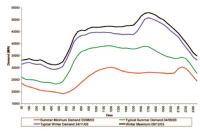
Photo Source: YouGen
The electrical grid transmits electrical power at a set frequency which varies from country to country. For example, in Nigeria, it is 50Hz, but in the US, it is 60Hz. The actual number doesn’t particularly matter, but the frequency must be kept as close to this value as possible. To keep the frequency of the transmitted power at this set value, the amount of power generated needs to be equal to the amount of power consumed. This is known as “load balancing”. If not enough electricity is produced, the frequency will fall, and customers won’t be able to use their appliances. If too much electricity is generated, then the frequency will increase, and there may be damage to the grid or power outages. Power generation companies are able to accurately predict the amount of power consumed and generate the correct amount of power to keep this important balance.
THE SOLAR INCORPORATED
If we look at the same sort of graph, but for solar energy available, it is again predictable. There will be more solar energy around the middle of the day, and none once the sun has set. Something like this:
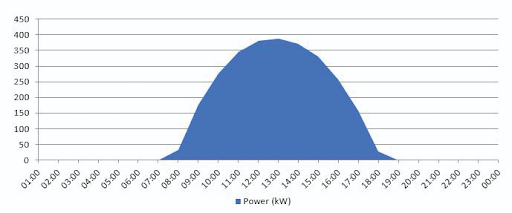
Photo Source: G & H Electrical Facebook Post
THE PROBLEM
The duck curve—named after its resemblance to a duck—shows the difference in electricity demand and the amount of available solar energy throughout the day. When the sun is shining, solar floods the market and then drops off as electricity demand peaks in the evening. The duck curve is a snapshot of a 24-hour period in a typical load demand with solar incorporated into the system.
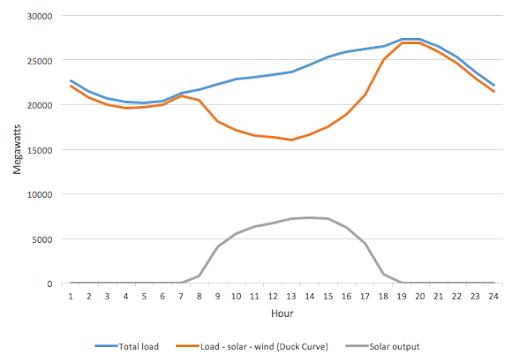
If the number of people using solar panels increases, this ‘dip’ in electricity use from the power plant will get bigger and bigger. If we plot increasing levels of electricity generated by solar panels, we end up with a graph that supposedly looks like a duck, and this is why it is referred to as ‘the duck problem’. The illustration below illustrates the ‘duck curve’:
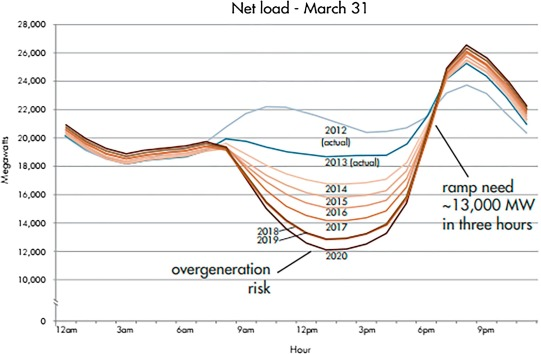
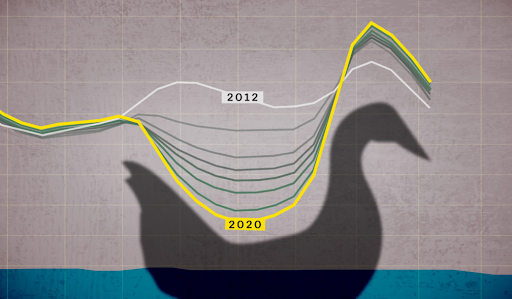
The problem comes because these graphs do not match up very well. During the middle of the day, most of the energy needed by houses are able to be generated from the solar panels, and they use less power from the power plants. Later on in the day, the solar panels aren’t producing enough, and the house needs to get all its electricity from the power plant. All fine? Not so much. This change is incredibly hard for the power plants to deal with. It increases the risk that the supply and demand might not match up, changing the electricity frequency, and causing havoc for the grid or even collapse. It becomes increasingly difficult for the energy generators to predict the demand because they have to now also factor in solar energy use. Another problem comes with the huge ‘ramp’ of power generation needed in the evening when electricity demand is at its highest, and solar power is beginning to drop off.
THE SOLUTION
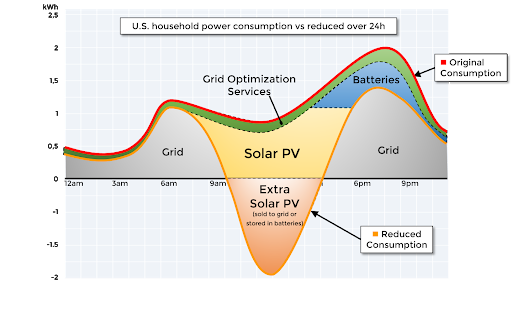
The simplest way to combat this is to incorporate some sort of grid optimization and/or a storage solution into the solar panels so that any excess generation from the daytime can be stored and used at night to reduce direct consumption from power plants (this is called “Peak shaving”) as shown in the illustration above. This sounds easy but relies on the idea that enough electricity can be generated from solar panels alone, with no input from the power plant, the storage solution efficiency, quality, cost, and shelf life . Until this is the case, the ‘Duck Problem’ remains a very real threat to the integration of solar energy, until a sustainable solution preferred and this is where Sunhive LTD comes to play.
Sunhive LTD is currently working on a way to make this possible by integrating highly efficient batteries as the storage solution from small to large scale systems. Possibly a sustainable solution is already proferred, only time will tell.
Written by: Joshua Oyesiji
